Ev Global
Toyota Opens Lexus Charging Stations to All EVs: A Game Changer!
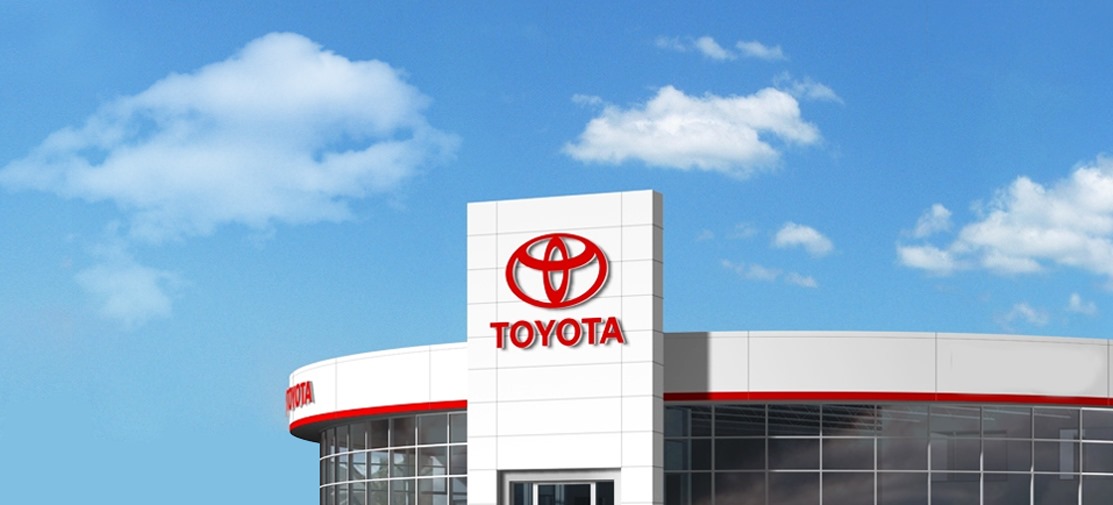
Toyota’s Strategic Move
In a significant and strategic shift, Toyota has announced that it will open Lexus charging stations to other electric vehicle (EV) brands in Japan. This bold initiative mirrors Tesla’s pioneering approach of making its Supercharger network accessible to all EVs and represents a crucial step in Toyota’s adaptation to the rapidly evolving automotive landscape.
Toyota, traditionally known for its pioneering work with hybrid technology, has been cautious in its approach to fully electric vehicles. However, the global shift towards sustainable and renewable energy sources has prompted the automotive giant to rethink its strategy. By opening up its Lexus charging network to other EV brands, Toyota is not only expanding its service offering but also fostering a more collaborative and inclusive EV ecosystem in Japan.
Progress Under the Lexus Electrified Program
As part of the Lexus Electrified Program, Toyota’s luxury brand, Lexus, has already achieved significant milestones. The first rapid charging station was launched in Tokyo Midtown Hibiya in June 2023, setting a precedent for the brand’s commitment to supporting electric mobility. This station was soon followed by a second one at Karuiza Common Grounds in December 2023. Both of these stations are equipped with quick chargers that deliver up to 150 kW of power, ensuring that electric vehicles can be recharged swiftly and efficiently.
These charging stations are strategically located to maximize convenience for EV users, highlighting Lexus’s dedication to enhancing the electric vehicle experience. The high charging speeds offered by these stations mean that EV drivers can enjoy reduced waiting times, making electric vehicles more practical for long-distance travel and daily commuting alike.
Ambitious Goals for 2030
Lexus’s vision for the future is both ambitious and forward-thinking. By 2030, the brand aims to establish approximately 100 charging stations across Japan. This extensive network will play a crucial role in supporting the widespread adoption of electric vehicles. The ambitious goal underscores Toyota’s commitment to facilitating the transition to fully electric vehicles and its dedication to building a sustainable future.
In comparison, Tesla’s Supercharger network currently offers up to 250 kW peak charging rates, with plans to introduce the V4 Supercharger that will support up to 350 kW output, although it is currently capped at 250 kW. While Tesla’s charging speeds remain unmatched, Lexus’s growing network and its openness to other EV brands provide a competitive and appealing alternative for EV drivers in Japan.
Embracing a Sustainable Future
Toyota’s decision to open Lexus charging stations to other EV brands signifies a pivotal shift towards a more inclusive and supportive infrastructure for electric vehicles. This move is not just about expanding service offerings but also about fostering a collaborative environment that encourages the growth of the EV market. By making its charging stations accessible to all EVs, Toyota is contributing to a more integrated and user-friendly electric vehicle ecosystem.
This strategy aligns with global trends towards sustainable energy solutions and reflects Toyota’s broader strategy to embrace the future of electrification. The automotive industry is in the midst of a significant transformation, with an increasing focus on reducing carbon emissions and promoting green technologies. Toyota’s initiative is a clear indication of its commitment to playing a leading role in this transformation.
Conclusion
Toyota’s initiative to open Lexus charging stations to other EV brands highlights its adaptation to the changing automotive landscape and its commitment to supporting fully electric vehicles as part of the Lexus Electrified Program. By 2030, with approximately 100 charging stations planned across Japan, Toyota is not only supporting the transition to electric vehicles but also paving the way for a more sustainable and collaborative future. This move, mirroring Tesla’s strategy, positions Toyota as a key player in the global shift towards electric mobility, underscoring its dedication to innovation and environmental stewardship. As the world moves towards a greener future, Toyota’s efforts to enhance the EV infrastructure in Japan will undoubtedly have a significant and lasting impact.
Article By
Blog
Kia Carens Clavis EV: Kia’s New Electric MPV Set to Launch on July 15
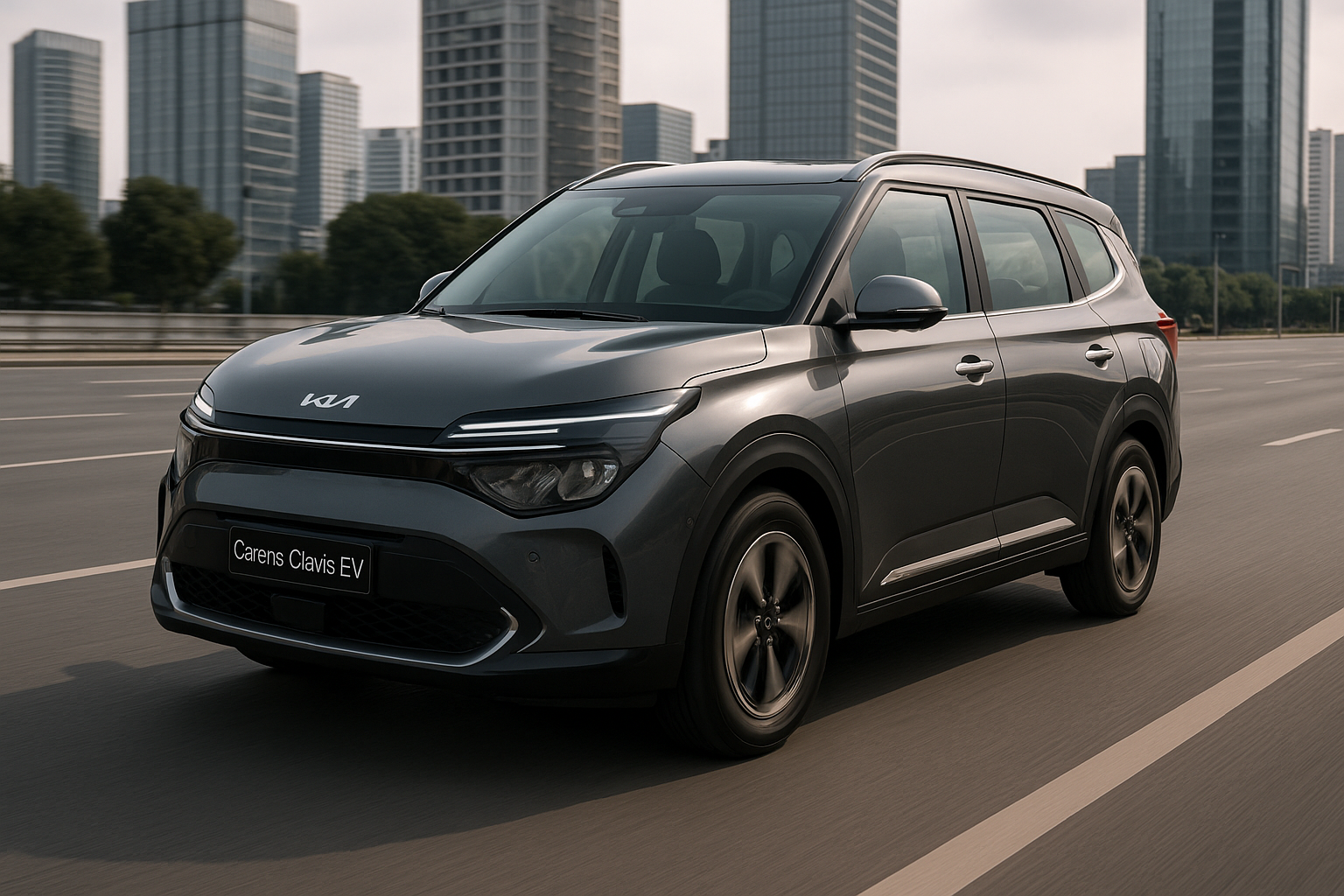
Kia’s New Electric Ride: The Carens Clavis EV
So, here’s the scoop: Kia is about to launch something pretty exciting — the Carens Clavis EV, which is an electric version of their popular Carens MPV. And trust me, it’s one to keep an eye on.
Kia’s making a bold move into the electric vehicle (EV) market with this one. With seven seats, a 500 km range on a single charge, and some pretty impressive tech, this car is aiming to make a mark. It’s expected to launch around July 15, 2025, so we don’t have long to wait!
Why the Carens Clavis EV Is a Game-Changer for Families
The thing about this car is that it’s designed for families. If you’ve ever felt like electric cars are just for single people or city commuters, Kia is here to prove that’s not true. With the Carens Clavis EV, you get the perfect mix of space and eco-friendly driving.
The big selling point? The 500 km range. This is going to be a huge deal for families who want to go on road trips without constantly worrying about finding a charging station. That range is perfect for weekend getaways or long drives with the family, especially when you’re going to be on the road for a while.
What Makes the Carens Clavis EV Stand Out?
Kia has thought about comfort here. This is a family car, so the three rows of seats are perfect for bigger families or anyone who’s constantly shuttling kids and their friends around. Plus, with seven seats, you won’t be squished in the back.
And since it’s electric, it’s going to be a smooth, quiet drive. No more engine noise — just the quiet hum of the road, making your ride that much more peaceful.
Inside, expect high-tech features like smart infotainment systems, driver-assist technology, and all the cool gadgets that make driving easier and more fun. So whether you’re in the city or driving out for a weekend, it’s going to feel like a premium experience.
Is It Easy to Drive? You Bet!
One thing we know for sure is that the Carens Clavis EV will be easy to drive. Electric cars are known for being super smooth and responsive, and this one will be no exception. With instant torque, you get smooth acceleration, which means no lag when you hit the gas. Whether you’re in traffic or cruising down the highway, you’re going to have a blast driving it.
Plus, with the fast-charging features, you won’t be waiting around for hours to get back on the road. Kia seems to be thinking about the practical side of things, and that’s always a win when it comes to electric cars.
Who’s the Carens Clavis EV Perfect For?
If you’ve been eyeing an electric car but didn’t think you could find one that fits your family, the Carens Clavis EV might be your answer. It’s designed for families on the go who need space, comfort, and the eco-friendly perks of an electric car.
With the 500 km range and fast charging, this car isn’t just for short city trips. It’s made for long drives, too. Whether you’re going on a family road trip or just running errands around town, this car has you covered.
What’s Next for the Carens Clavis EV?
As the launch date of July 15 gets closer, there’s a lot of excitement building around this car. Kia is committed to offering a family-friendly electric vehicle, and with its range, tech, and performance, the Carens Clavis EV could be a major hit.
So if you’re looking for a spacious, family-friendly electric car, don’t forget to mark the launch date on your calendar. It might just be the perfect time to make the switch to electric.
Blog
Mercedes-Benz CLA Electric: The Luxury Electric Sedan You’ve Been Waiting For
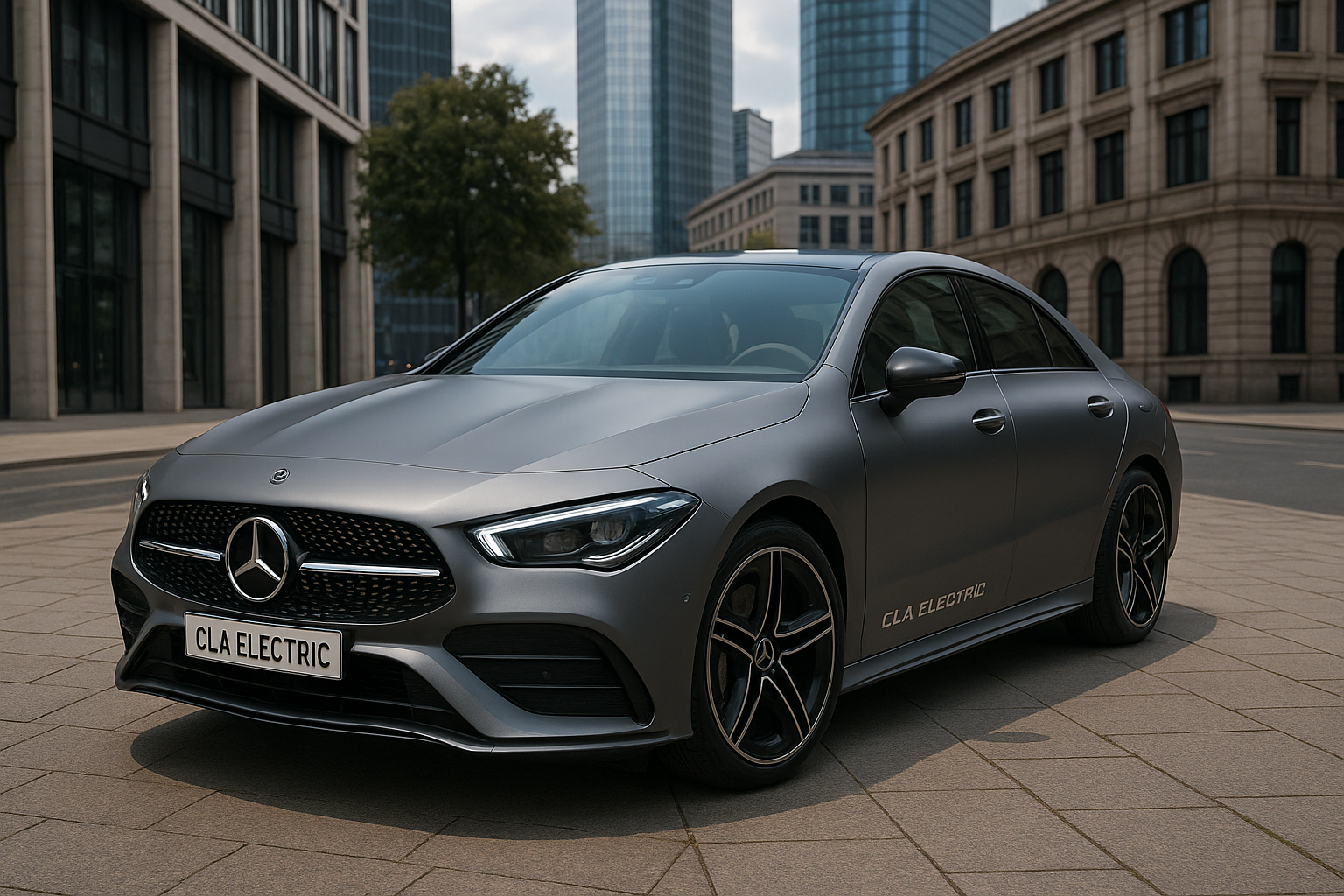
Mercedes Brings Luxury to Electric Driving
Mercedes-Benz has always been the go-to brand for luxury cars. Now, they’re bringing that same high-end experience to electric vehicles with the CLA Electric. Set to be released in July 2025, this electric sedan is going to offer the kind of style, performance, and comfort that Mercedes is known for — but with an eco-friendly twist.
If you’ve been dreaming of an electric car that doesn’t compromise on luxury, performance, or looks, the CLA Electric is going to make all of that possible.
Why the CLA Electric is a Big Deal
The CLA Electric is not just another electric sedan. It’s Mercedes—and we know that means top-of-the-line luxury with every drive. From what we’ve seen so far, this car is expected to combine sleek, futuristic design with a comfortable, high-tech interior, while still delivering the powerful performance you expect from a Mercedes.
The best part? It’s fully electric. That means you can enjoy the luxury of a Mercedes while driving a car that’s not contributing to air pollution or burning fuel. For people who want the best of both worlds — an eco-conscious car that still feels premium — the CLA Electric could be the perfect fit.
Performance You Can Count On
When you think of Mercedes, performance is never far behind. And the CLA Electric is no exception. While we don’t have all the specifics yet, it’s safe to say this car is going to be fun to drive. Expect smooth acceleration, a nice driving range, and zero emissions.
If you’re someone who loves the thrill of a smooth ride but also wants to feel good about your impact on the environment, this car delivers. Plus, with fast-charging capabilities, you won’t spend your life waiting around at charging stations. More driving, less waiting — that’s what the CLA Electric is all about.
A Luxurious Interior with All the Right Features
Mercedes is known for making interiors that feel like a luxury living room, and the CLA Electric will be no different. Inside, you can expect plush seating, top-quality materials, and an advanced infotainment system that’s easy to use and packed with features.
The digital displays and driver-assistance technologies will make sure every drive is safe, smooth, and enjoyable. Whether you’re running errands in the city or going on a road trip, you’ll feel relaxed and connected at all times.
Going Green, in Style
The CLA Electric isn’t just a luxury car; it’s a step toward a cleaner, greener future. By going electric, Mercedes is giving us a way to reduce our carbon footprint without sacrificing the driving experience. For people who want to make a positive environmental impact but don’t want to give up on luxury, this is the car to look out for.
With more and more people wanting to drive electric, the CLA Electric is Mercedes’ way of saying, “We can do both — luxury and sustainability.”
What’s Next for the CLA Electric?
We’re all looking forward to seeing the CLA Electric in action once it hits the market. It’s Mercedes’ big step into the luxury EV segment, and if the early buzz is anything to go by, it’s going to be worth the wait. The CLA Electric promises to set a new standard for what a luxury electric sedan should be.
If you’re someone who’s been waiting for a high-performance, stylish, and sustainable electric vehicle, the CLA Electric should be at the top of your list.
The CLA Electric Is Almost Here — Are You Ready?
If you’ve ever dreamed of owning a luxury electric sedan that blends high-end style, performance, and eco-friendly technology, then the Mercedes-Benz CLA Electric is exactly what you’ve been waiting for.
With its sleek design, advanced features, and eco-conscious engineering, this car is going to turn heads when it hits the streets. Keep an eye out for the official launch in 2025 — the future of driving is here, and it’s electric!
Article By
Sourabh Gupta
Blog
India’s EV Market Heats: More Players, More Competition
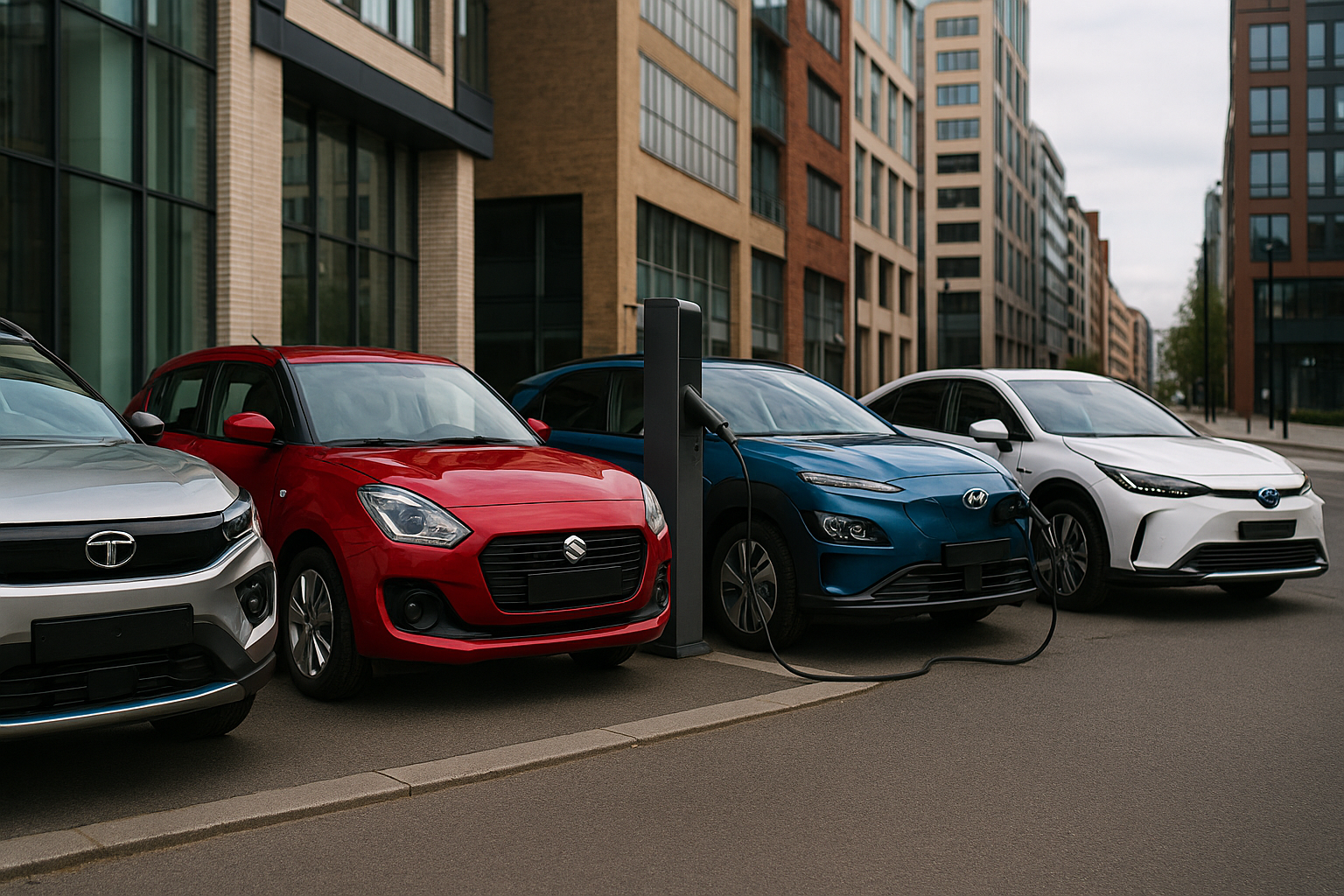
The Electric Vehicle Battle Is Just Getting Started
You know how things are changing fast with electric vehicles here in India? Well, it’s no longer just a couple of companies in the game. Tata and Mahindra have been leading for a while, but now Maruti, Toyota, and Hyundai are jumping in too. It’s turning into a proper race, and that’s great news for anyone thinking about buying an EV.
More players mean more choices, and when companies compete, it usually means better deals and cooler cars for us.
New Entrants Bring Fresh Energy
Maruti Suzuki is like the go-to brand for most Indian families because their cars are affordable and reliable. Now, if they start selling EVs, it’s going to make electric vehicles a lot more reachable for everyday folks.
Then you have Toyota and Hyundai, which have been working on electric cars globally for years. They’re bringing that know-how to India, which means better technology and cars designed to handle our roads and conditions.
This fresh blood is going to push everyone to do better, which is a win for all of us.
What This Means for Consumers
For buyers, this is the best time to consider an EV. You’ll get a wider choice of vehicles — from simple and affordable models to fancy ones packed with features.
Also, with so many companies competing, expect better batteries that last longer, faster charging times, and prices that won’t scare you away.
Charging stations will become more common, making it easier to own and use an EV without stress.
Challenges for Established Players
Tata and Mahindra have done well so far, but now the heat’s on. They’ll need to keep improving their cars and customer service to stay ahead.
More competition means prices might get friendlier, and cars will keep getting better, which is good news for everyone.
The Road Ahead: A Win for India’s Green Future
All this competition will speed up EV adoption, which means cleaner air and less pollution.
With more companies investing in EVs, we’ll see more charging points, better batteries, and more jobs related to green technology.
The future looks electric, and it’s shaping up to be an exciting ride.
Article By
Sourabh Gupta
-

 Blog1 year ago
Blog1 year agoIndia’s Electric Vehicle Market Forecast to 2028 A Rapidly Growing Industry
-

 Blog12 months ago
Blog12 months agoMahindra BE 6 An Intense Move toward the Fate of Electric Versatility
-

 Blog1 year ago
Blog1 year agoTop 10 Electric Vehicles of 2024: A Comprehensive Guide
-

 EV news11 months ago
EV news11 months agoAmpere Magnus Neo Another Time of Electric Portability
-

 Blog1 year ago
Blog1 year agoTop 5 best electric vehicles Under $30,000: Affordable Choices for 2024
-
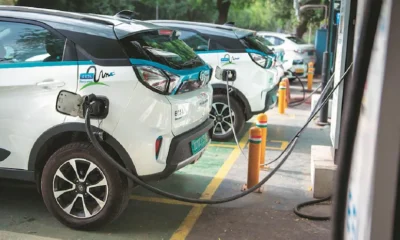
 EV news11 months ago
EV news11 months agoIndia’s EV Revolution Electric Cars to Outpace Petrol & Diesel in 2025
-

 Blog2 years ago
Blog2 years agoImpact of Electric Vehicles on the Environment and Pollution
-

 EV news1 year ago
EV news1 year agoOla Electric Offers Massive Festive Discounts on Scooters Starting at ₹50,000




